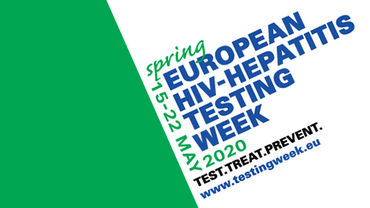ECDC publishes first report monitoring progress towards the elimination of hepatitis B and C in the EU/EEA
The first report monitoring the progress towards the elimination of hepatitis B and C across European Union (EU) and European Economic Area (EEA) countries has been published by ECDC. The report represents a significant step towards the understanding of priority areas for action and gaps in the national responses to hepatitis B and C epidemics. Furthermore, the collated data provides an important baseline to help map progress towards the WHO elimination targets and the achievement of the 2030 Sustainable Development Goals (SDGs).
Developed in close collaboration with all 31 EU/EEA countries, the WHO Regional Office for Europe and many other partner organisations, the report ‘Monitoring the responses to hepatitis B and C epidemics in the EU/EEA Member States’ provides the first collation of data relating to the monitoring of the progress towards the elimination of hepatitis B and C for EU/EEA countries.
One of the targets of the Sustainable Development Goals (SDGs) is to “combat hepatitis” by 2030. To date, however, there has been no standardised system in place to monitor and evaluate the progress made towards the hepatitis targets included in the SDG, the Global Health Sector Strategy on Viral Hepatitis and the World Health Organization’s European Action Plan for the elimination of hepatitis. ECDC subsequently developed a monitoring framework for hepatitis B and C covering EU/EEA countries, which is closely aligned with the targets and milestones in the European Action plan and the monitoring tool developed by the WHO.
The implementation of this monitoring system supports EU/EEA countries in evaluating their responses to tackling the hepatitis B and C epidemics through a structured and harmonised approach. The system also provides a comprehensive overview of the situation to guide the European Commission and other European Agencies in their support to Member States in achieving their goal of elimination.
Key findings
The significant gaps in the data in relation to the prevention, testing and treatment of HBV and HCV in EU/EEA countries present a major challenge to monitoring progress towards the SDGs and targets of elimination for hepatitis. In order to guide national responses to hepatitis B and C, countries should prioritise improving the quality of their monitoring systems.
The epidemics of HBV and HCV are complex and dynamic; current evidence is insufficient to provide a clear understanding of the epidemiological situation. There is a need for high-quality epidemiological information on the burden of HBV and HCV to guide the scaling-up of prevention services and to inform regional and global activities that will shape the response to these epidemics. Available data suggest that there are around 9 million Europeans who live with chronic hepatitis B or C. This includes many people with an asymptomatic and hence undiagnosed and untreated hepatitis infection, which can lead to liver cirrhosis and hepatocellular carcinoma.
The report highlights major gaps in prevention programmes with suboptimal HBV vaccination coverage across EU/EEA countries and gaps in harm reduction programmes targeting people who inject drugs. Robust data relating to the care continuum are lacking in most countries but available data suggest that a high proportion of people living with hepatitis B and C infections appear to be undiagnosed and that large numbers of people living with diagnosed hepatitis B and C infection are not receiving life-saving treatment. In terms of mortality, hepatitis related mortality is high in the region and there is very little evidence of progress towards the 2030 elimination target of a 65% reduction in mortality against the 2015 baseline.
Testing essential for the elimination of hepatitis
Publication of this report coincides with Spring European Testing Week 2020 - a European initiative that aims to increase testing efforts and promote awareness on the benefits of earlier hepatitis and HIV testing.
The high proportion of people living with hepatitis B and C who are undiagnosed is a key finding of this report. This indicates that concerted efforts are needed to scale up testing for hepatitis B and C, especially among people who inject drugs and people in prison, if EU/EEA countries are to have any chance of reaching the 2030 targets on diagnosis, treatment and viral suppression.







